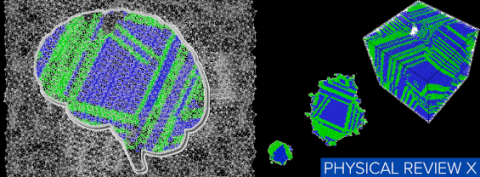Nonclassical nucleation pathways in stacking-disordered crystals

When a solid phase emerges from a liquid melt, such as during the nucleation of several metals and minerals, the formation of nanometer-sized ice crystallites in clouds, protein crystallization, or drug molecules synthesis, the result is often a mixture of different competing crystalline phases, known as polymorphs. This competition among polymorphs is driven by thermodynamic and dynamic factors whose understanding is crucial for predicting the physical and chemical properties of the growing nuclei.
One of the main difficulties in studying polymorph composition is the identification of crystalline phases at the single particle level based on the local environment surrounding a particle. In a recent article published in Physical Review X, Fabio Leoni and John Russo from the Department of Physics of Sapienza University of Rome numerically investigated the nucleation process of models that are representative of a wide class of materials such as repulsive colloids and dense liquids as well as tetrahedrally bonded materials, including water and other group-14 elements such as carbon and silicon.
To identify crystalline phases, they introduced a novel structural order parameter combined with a neural-network classification scheme thereby reaching resolutions that exceed what was previously possible. They found that small nuclei have distinct size fluctuations and compositions from the nuclei that emerge from the growth stage. The transition between these two regimes is characterized by the formation of onion-like structures, in which the composition changes with the distance from the centre of the nucleus, akin to what is seen in the two-step nucleation process.
The generality of the neural-network method makes it suitable for application to big data sets from systems showing characteristic ordered or disordered signatures, such as defects or interfaces in crystalline or amorphous materials.
Authors:
Fabio Leoni e John Russo
Reference
Physical Review X
